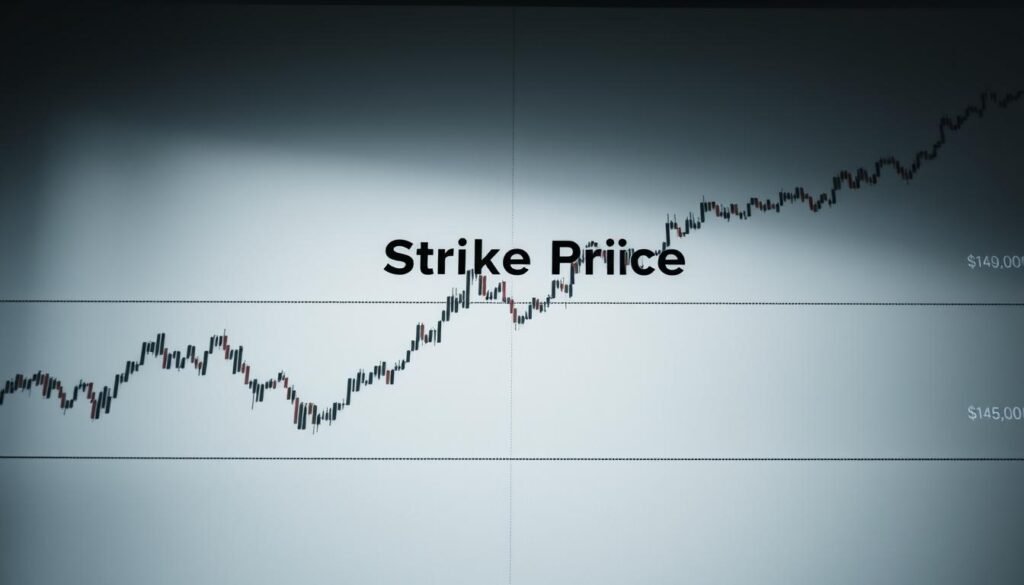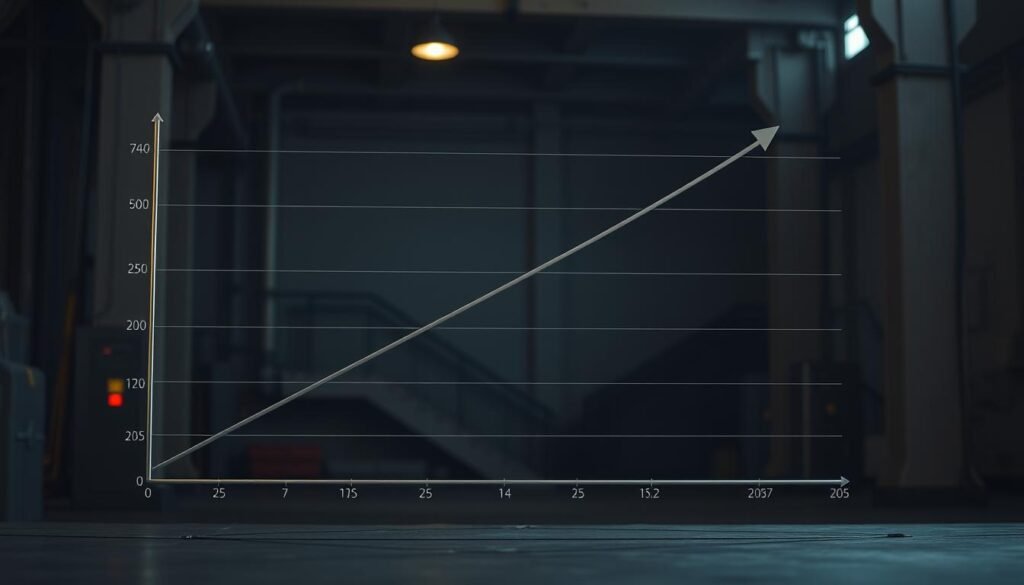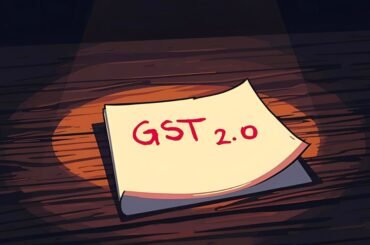Have I ever missed a clear trade because I misunderstood a single price or bid/ask spread?
I wrote this glossary so I can link 25 must-know words to real decisions I make in the market each day. I explain how a call gives me the right to buy and a put lets me sell, while the seller takes the opposing obligation on the contract.
I note practical details: listed equity contracts typically cover 100 shares, the OCC guarantees exercise and settlement, and automatic exercise protects in-the-money positions at expiration. I also show how bid and ask prices shape fills, slippage, and the value I pay or receive.
Throughout, I tie each definition to price behavior, position sizing, and risk control. This short intro frames the glossary for traders in India accessing U.S. stock markets so I can apply these concepts across exchanges with confidence.
Getting started: how I use a glossary to learn options fast
I use a compact set of definitions to speed decisions on bid, ask, and fair fills.
Each morning I bookmark a few key entries and run them before the market opens. That habit sharpens my eye for premium moves and spread widening.
I link every definition to a short workflow: spot the underlying security trend, pick a call or put, size the position, and set exits. This turns abstract language into quick action during the day.
I track four prices—bid, ask, mid, last—so I judge fair fills and avoid overpaying for an option. Note: market orders often execute at the ask when buying and at the bid when selling, so I favor limit orders when spreads are wide.
- I tag glossary entries by goal: directional, income, or hedge.
- I add time notes for earnings week and expiration week to gauge value shifts.
- I keep one-line reminders for each term so I can recite them while placing a long position.
| Quote | What I watch | My action |
|---|---|---|
| Bid | Buyback interest, fair sell price | Use limit sell near bid |
| Ask | Immediate buy cost | Place limit buy below ask when possible |
| Mid / Last | Reference for fair value | Accept fills near mid; skip if far from last |
Options trading terms
I treat clear language as part of my execution plan. When I name a rule, I can act fast and protect capital.
Why these 25 essential items matter for real trades
Every label affects how I enter, size, and exit a position. Bid and ask shape the price I pay or receive.
At the market orders execute immediately at the best available price. Buy market orders fill near the ask; sell market orders fill near the bid.
All-or-none orders require full fills or no fill, which changes execution quality and can keep money in my account during volatile sessions.
How I apply definitions during my day
- I prioritize labels that change fills and risk, such as bid/ask, market versus limit, and all-or-none instructions.
- I convert moneyness into probability to choose strike and expiration for a given payoff.
- I use the Greeks to forecast how option value will shift with stock direction, volatility, and time decay.
- I keep consistent names for every position to speed journaling and review of prices and outcomes.
| Order type | Typical execution | When I use it |
|---|---|---|
| Market | Immediate near bid/ask | Urgent fills |
| Limit | Price specified | Control cost |
| All-or-none | Full fill or none | Block orders, liquidity concerns |
Calls and puts: the core option contract types
I check the rights and obligations of a contract before I enter a trade. That clarity guides strike selection, sizing, and exit planning.
Call option mechanics
I define a call as my right to buy the underlying stock at a chosen strike price. If I exercise, the seller has an obligation to deliver the agreed number of shares.
Standard listed equity contracts normally control 100 shares. That contract size matters when I size a position and calculate notional value.
Put option mechanics
I define a put as my right to sell the underlying security at the strike price. If assigned, the seller must purchase the shares from me.
- I plan for assignment risk: a covered call can be called away, and a cash-secured put may require me to take delivery.
- I pick calls or puts by directional bias and by how implied volatility and time to expiration affect premium.
- I always confirm that contract size aligns with my account so the number of shares matches my risk limits.
| Feature | Call | Put |
|---|---|---|
| Right | Buy stock at strike price | Sell stock at strike price |
| Seller obligation | Deliver shares | Purchase shares |
| Standard contract | 100 shares | 100 shares |
Strike price, underlying stock, and current market price
I treat the strike as the anchor that links an option contract to the actual share price on the market.
Strike price vs stock strike price wording
The strike price is the level at which I can buy or sell the underlying security if I exercise. I keep wording consistent with “stock strike price” when I check exchange paperwork or broker docs.
Underlying security and price of the underlying
I track the underlying stock’s last trade, bid, ask, and average price on my platform. Those numbers tell me where the option’s premium should sit.
Market price and bid/ask price context
I compare the current market price of the underlying to my strike to decide moneyness and to estimate intrinsic value versus time value.
- I use strike price as the contract-defined level for exercise and plan for lot size (typically 100 shares) when I size a position.
- I watch bid and ask: bid is the highest buyer price, ask is the lowest seller price, and the spread shows execution cost.
- I often place limits near the mid-price to avoid paying full ask and to improve fill quality, especially around earnings when spreads widen.
| Item | What I watch | Why it matters |
|---|---|---|
| Strike price | Strike vs current market price | Determines moneyness and intrinsic value |
| Underlying stock | Last, bid, ask, avg | Frames premium and expected move |
| Market price | Bid/ask spread | Impacts fills and assignment risk |
Intrinsic value, extrinsic value, and premium
I break every premium into two parts so I can tell how much comes from intrinsic worth and how much will decay with time and volatility.
Option intrinsic value: in-the-money definition
Intrinsic value equals the difference between the price per share of the underlying stock and the strike price when that difference is positive.
If the underlying stock trades above the strike on a call, the option is in the money and shows intrinsic amount. For a put, intrinsic appears when the stock is below the strike.
Extrinsic (time) value and the option’s premium
Extrinsic value is the option price minus intrinsic value. It reflects time, implied volatility, and market expectations.
The premium is the per-share amount the buyer pays the seller. I watch theta: a theta of -0.05 implies the option may lose $0.05 per day, all else equal.
Price per share vs price of the option contract
- I read option price as premium per share and multiply by 100 to get the contract amount.
- I separate the stock’s price per share from the contract premium to avoid confusing notional exposure with cost paid.
- I size my position so expected time decay and implied volatility moves fit my risk plan.
| Measure | How I use it | Why it matters |
|---|---|---|
| Intrinsic value | Compare price underlying to strike price | Shows real, exerciseable worth |
| Extrinsic value | Premium − intrinsic | Represents time and volatility risk |
| Contract amount | Premium per share × 100 | Gives total dollar exposure |
| Theta | Daily decay estimate | Helps forecast time loss before expiration |
The option Greeks I track for price, time, and risk
A small group of Greeks helps me read time, volatility, and directional bias in a single glance.
I use delta to link moves in the underlying stock to moves in an option’s price. Calls carry positive delta; puts carry negative. Delta also serves as a quick proxy for the chance the contract finishes in the money by expiration.
Gamma shows how fast that delta can change when the price underlying shifts. It peaks near the strike and matters most around earnings or other catalysts.
Theta, Vega, and Rho
Theta is daily time decay. I treat it as a countdown on option value and plan entries around how theta will eat premium.
Vega tells me sensitivity to implied volatility. When volatility rises, option value usually rises too, so I watch vega into announcements.
Rho affects longer-dated contracts as interest rates change. I note it for multi-month positions, though its impact is usually modest.
- I size positions based on combined Greeks to tolerate adverse moves in price and volatility.
- I lean on model-generated Greeks but update them as market inputs change.
| Greek | What it measures | Why I watch it |
|---|---|---|
| Delta | Price change vs underlying stock | Direction and probability |
| Gamma | Delta change as price moves | Risk near strike price |
| Theta / Vega / Rho | Time decay / volatility / rates | Value erosion, premium swings, long-term rate effects |
Volatility and pricing models that shape option prices
I use pricing models to turn strike, time, and volatility into a clear dollar value. These models help me compare a theoretical option price against live market quotes and decide if a contract is rich or cheap.
Implied volatility versus realized volatility
Implied volatility is the market’s forward-looking estimate embedded in option prices. Realized volatility is what the stock actually did in the past.
I watch implied moves before events because a drop after an announcement can lower the option price even if the underlying stock stays near my strike price.
Black‑Scholes and other pricing frameworks
Common models include Black‑Scholes, Cox‑Ross‑Rubinstein, and Roll‑Geske‑Whaley. Each uses inputs: strike price, underlying stock price, volatility, dividend amount, time until expiration, and the risk‑free rate.
I compare the model value to live prices to spot mispricings and to size a position accordingly.
How models generate the Greeks I rely on
- Models output delta, gamma, theta, vega, and rho, which guide entry and exit scenarios.
- I stress-test positions using those Greeks to estimate how option value may change with stock moves, volatility shifts, and passage of time.
- I adjust for liquidity and market microstructure since models assume ideal conditions.
| Model | Key inputs | When I use it |
|---|---|---|
| Black‑Scholes | Price, strike, volatility, time, dividends, rate | Quick theoretical value for plain calls and puts |
| Binomial (Cox‑Ross‑Rubinstein) | Same inputs, discrete steps | American‑style contracts and early exercise checks |
| Roll‑Geske‑Whaley | Includes dividends and complex payout | Valuing contracts with known cash distributions |
Time horizons and expiration mechanics I never ignore
I treat every expiration date as a checkpoint, not an afterthought. The expiration is the date when a contract stops trading and its remaining value is settled.
Out-of-the-money positions expire worthless after the end of the trading day on expiration. In-the-money or at-the-money contracts may be automatically exercised by the clearinghouse, which can create overnight stock or cash positions.
Exercise windows and style differences
American-style contracts let me exercise any time up to expiration. That raises assignment risk for sellers and means I must watch my short positions closely.
European-style contracts restrict exercise to a specified period near expiration. That narrows when I can convert value into shares or cash and changes how I plan exits.
- I always note the expiration date and my broker’s trading day cutoff for exercise or do-not-exercise instructions.
- I confirm contract style so I know when exercise is allowed and how assignment may affect my account.
- I plan exits several days early for short premium trades to avoid pin risk and thin liquidity on the last day.
- I adjust horizons around events so collapsing implied volatility doesn’t leave me holding decaying value after a headline.
- I use calendars and reminders to manage multiple expirations and prevent missed actions that affect results.
| Feature | American | European |
|---|---|---|
| Exercise window | Any time until expiration day | Only during a defined period before expiration |
| Assignment risk | Higher for short positions, can occur any day | Lower until the allowed exercise window |
| Practical action | Monitor daily, set broker cutoffs | Plan exit near exercise window, use reminders |
Moneyness: in-the-money, at-the-money, out-of-the-money
Moneyness tells me how an option relates to the stock’s current price and guides practical choices.
I define moneyness by comparing the strike price to the current market price of the underlying stock. If the contract would yield positive value when exercised, it is in-the-money (ITM).
At-the-money (ATM) means the strike equals the market price of the underlying security. Gamma often peaks here, so delta can swing fast as prices move around the strike.
Out-of-the-money (OTM) has no intrinsic value and is unlikely to be exercised before expiration. I use OTM contracts for cheaper premiums and accept the lower probability of finishing in the money.
- I use ITM when I want higher delta and more option intrinsic value, accepting a larger premium outlay for direct exposure.
- I plan for the market to “pin” near popular strikes on expiration day and manage assignment risk.
- I remember automatic exercise rules for ITM contracts and close or roll positions to avoid unwanted stock delivery.
| Status | Where strike sits | Typical use |
|---|---|---|
| In-the-money | Strike favorable vs market price | Higher intrinsic value, stronger delta |
| At-the-money | Strike ≈ market price | High gamma, fast delta moves |
| Out-of-the-money | Strike not favorable vs market price | Lower cost, lower chance to finish ITM |
Opening, closing, long, and short positions
Knowing when I create or close a contract changes how I size risk and protect capital.

Buy-to-Open (BTO) means I buy a call or a put that was not previously sold. That action establishes a long position and gives me rights without obligations.
Sell-to-Open (STO) means I write a call or put I did not own. Selling to open starts a short position and creates an obligation if assigned.
Buy-to-Close (BTC) is how I buy back a contract I sold earlier to remove the obligation. Sell-to-Close (STC) is how I sell a contract I previously bought to exit a long position.
- I tag my orders precisely: BTO = new long; STO = new short with assignment risk.
- I plan BTC or STC ahead of spikes in volatility or thin liquidity near expiration.
- I separate rights and obligations: long holders hold exercise rights; sellers face duty if the contract finishes in the money.
- I watch the strike price and market moves and set limits to avoid forced exercise or unwanted assignment.
- I journal every existing position with entry reason, target, and stop to speed closing actions.
- I favor limit orders to control price and reduce slippage when unwinding contracts.
| Order | Action | Result | When I use it |
|---|---|---|---|
| Buy-to-Open | Buy call or put | Establish long position (rights) | When I want directional exposure |
| Sell-to-Open | Sell call or put | Establish short position (obligations) | When I write premium for income or hedge |
| Buy-to-Close | Buy back sold contract | Remove obligation | To exit before assignment or event |
| Sell-to-Close | Sell held contract | Exit long position | To lock in gains or cut loss |
Open interest, volume, and liquidity signals
Liquidity signals often decide whether I can enter or exit a position at a fair price. I read open interest and volume as direct measures of how tradable a contract is.
Open interest and bid-ask spread dynamics
Open interest is the number of contracts created at a given strike and expiration. High open interest usually means tighter bid and ask prices and steadier fills.
Low open interest often pairs with wide spreads and thin volume. That raises slippage risk and can make even small orders costly.
How I gauge tradability by number of contracts
I screen for higher open interest and steady daily volume to reduce the spread and improve my odds of a fair execution on price.
- I check typical daily turnover and the number of contracts to see if my size will move the chain.
- I compare bid, ask, and mid plus recent prints to estimate slippage before I place an order.
- I avoid illiquid chains where small orders can swing price, particularly when managing multi-leg positions.
- I plan exits ahead for low-liquidity contracts so I don’t have to cross the spread late in the day.
- I factor in how institutional flows cluster at certain strikes and expirations, which can tighten spreads unexpectedly.
| Metric | What I look for | Why it matters | Action I take |
|---|---|---|---|
| Open interest | High and growing | Tighter spreads, reliable fills | Prefer these strikes for size |
| Volume (daily) | Consistent turnover | Shows active market participation | Use for timing entries/exits |
| Bid/ask spread | Narrow spread | Lower slippage cost | Place limit orders near mid |
Orders and execution I use to control entries and exits
Order type and execution quality decide whether my plan hits the intended price or drifts away.
I pick instructions to match liquidity, time horizon, and how much slippage I can tolerate. I prefer clear controls over guessing fills.
Market orders, at-the-market, and slippage
At-the-market orders execute immediately at the best available quote. Buy orders tend to fill near the ask; sell orders fill near the bid. I use market buys only when spreads are tight and liquidity is high.
All-or-none, fill-or-kill, and contingency orders
All-or-none requires a full fill or no trade. Fill-or-kill cancels if it cannot execute immediately at the set level. I use these when partial fills would break my risk math.
Day orders and how they expire
Day orders expire at session close if unfilled. I default to day unless I need persistence for a multi-day plan. That prevents unintended next-day executions in my account.
Bid/ask quotes and spreads in options
I watch bid/ask spreads to judge fair value and execution cost. Wider spreads raise slippage and force me to work the mid or post limit orders in small increments.
Execution, confirmation statements, and commissions
After a fill I check confirmations for executed quantity, executed price, and commissions. I reconcile these with my journal to confirm trade accuracy and account costs.
- I default to limit orders to control the option price I pay or receive and to reduce slippage.
- I reserve market orders for highly liquid chains where spreads are tight and execution risk is low.
- I use all-or-none and fill-or-kill selectively when I need certainty on fills without partial execution harming my plan.
- I mark most orders as day orders to avoid accidental next-day activity in my account.
- I set contingency orders tied to the underlying security price or volume to automate parts of my playbook.
| Order type | Typical execution | When I use it |
|---|---|---|
| Market / At-the-market | Immediate at best quote | High liquidity, urgent fills |
| Limit | Specified price or better | Control cost, reduce slippage |
| Fill-or-kill / AON | All filled now or canceled | Block size or no partial fills |
Exercise, assignment, and settlement flows
I watch exercise and assignment as concrete steps that change a paper contract into actual share delivery or cash. These events affect my buying power, taxes, and the practical outcome of a position.
Exercise rights for owners and assignment for sellers
When I exercise a call, I use my right to buy shares at the strike price. When I exercise a put, I sell shares at that strike price.
If I’m short, assignment brings an obligation. The seller who wrote a call may be called away and must surrender shares. A short put writer can be required to take delivery and pay for shares.
Called away, taking delivery, and cash settlement options
Called away means I lose shares because my written call was exercised. Taking delivery means I end up owning shares after a put assignment.
Some contracts settle in cash instead of transferring the underlying security. Index-style contracts often pay the net money value, so no shares move into my account.
- I confirm whether a contract is physically settled or cash-settled before I plan exits.
- I plan for corporate actions and dividends, which raise early-exercise risk on short calls.
- I keep enough buying power to cover possible share purchase or delivery on assignment.
- I sometimes instruct my broker do-not-exercise for marginally in-the-money contracts to avoid poor settlement outcomes.
| Feature | Physical settlement | Cash settlement |
|---|---|---|
| Result | Shares transfer to/from account | Net money paid or received |
| Impact on account | Changes share balance and margin | Adjusts cash balance only |
| Common use | Equity contracts | Index and some broad-based contracts |
Spreads and multi-leg strategies I consider
I pick multi-leg setups when a single call or put doesn’t match my risk or market view. These structures let me control upside, limit loss, and shape how time and volatility affect price.
Credit vs debit spreads
Credit spreads: I sell a higher-premium option and buy a lower-premium one. For example, a bullish credit put spread or a bearish credit call spread nets premium while capping risk at defined strikes.
Debit spreads: I buy a higher-premium option and sell a cheaper one. This gives directional exposure at lower cost than one long position, but the upside is capped.
Calendar and diagonal spreads
I sell near-term and buy longer-dated contracts at the same strike to capture time decay differentials. Diagonals mix different strike prices and expirations to tune delta and time value for my view on price and volatility.
Butterflies and ratio backspreads
Butterflies give defined risk: buy one ITM, sell two ATM, buy one OTM to target a price near expiration.
Call ratio backspreads involve selling one call and buying more calls at higher strikes. I use them when I want convex upside with controlled downside if the move is muted.
Covered calls and collars with stock
I write covered calls against stock I own to generate income. To limit downside, I add a protective put and form a collar. Every multi-leg must fit my account risk budget and align with my view on volatility and expected price path.
| Strategy | Primary goal | Risk profile |
|---|---|---|
| Credit spread | Collect premium | Defined loss |
| Debit spread | Directional play | Capped gain |
| Calendar/Diagonal | Time value capture | Term-structure risk |
Breakeven, arbitrage, and pricing edges
I measure edges by the price levels that turn a strategy profitable or flat at expiration. That single number shapes my targets, stops, and the likelihood a position finishes worth holding.

Breakeven points at expiration
The breakeven point is the stock price where a strategy has neither gain nor loss at expiry. For a long call, breakeven equals the strike price plus the premium I paid.
I map breakevens for spreads and butterflies so I can see how price at expiration maps to profit or loss. This helps me set realistic exit rules and size positions to match my risk budget.
Arbitrage and derivative security relationships
Arbitrage means buying and selling related securities to lock in risk-free profit. True arbitrage is rare for retail and comes with execution and model risk.
- I monitor parity relationships between the option and the underlying security to spot obvious mispricings.
- I prefer edges from structure and execution—tight price levels and disciplined exits—over fragile arbitrage bets.
- I respect event risk: expected relationships can break when time, volatility, or liquidity shifts suddenly.
| Item | How I use it | Practical note |
|---|---|---|
| Single-leg breakeven | Set price target | Strike + premium for a long call |
| Spread breakeven | Map profit zone | Calculate combined premiums and strikes |
| Parity check | Sanity-check quotes | Compare option value to underlying security relationships |
Exchanges, clearing, and market structure
Clearinghouses and exchanges work behind the scenes to convert paper rights into enforceable contracts I can trade with confidence.
OCC clearinghouse and contract guarantees
The Options Clearing Corporation (OCC) becomes the buyer to every seller and the seller to every buyer. I rely on the OCC to guarantee performance and to standardize settlement.
The OCC also handles automatic exercise on expiring in‑the‑money contracts, so I track my positions and expiry dates to avoid unintended delivery or cash adjustments.
CBOE, CBOT, CME, and exchange roles
I pick listing venues that offer deep liquidity. CBOE created listed options in 1973 and lists many equity chains.
CBOT and CME list futures and related option products that can signal volatility for the same underlying. I monitor these markets for cross‑venue cues before I size a position.
Contract specifications and adjustments
Standard stock option contracts usually control 100 shares. I confirm the multiplier, tick size, exercise style, and the strike price before I place any order.
Corporate actions like splits or dividends can adjust deliverables. I review notices and the contract table on my broker to see any new number of shares or date changes.
- I verify listing and expiration date conventions to avoid month or weekly mixups.
- I check contract specs so I know how many shares a contract obliges me to deliver or receive on assignment.
| Exchange | Primary role | When I watch it |
|---|---|---|
| CBOE | Listed equity option liquidity | Selecting chains and strikes |
| CME | Futures and index options | Volatility signals for hedges |
| CBOT | Broad futures, agricultural contracts | Macro price moves that affect stocks |
Conclusion
A compact checklist ties everything together for me. Mastering bid/ask, exercise and assignment makes my price checks sharper and cuts the chance of surprise at settlement.
I review this glossary before the day starts and after the session ends. That keeps each option idea clear, so I size a position, set exits, and note how market liquidity and model inputs change value and risk.
Understanding the OCC and exchange mechanics helps me plan for actual delivery or cash settlement. I translate definitions into repeatable steps from pre-market prep to post-trade journaling.
I keep learning by practice, refining how I pick strikes, expirations, and strategies so my approach fits my edge and risk tolerance in Indian access to U.S. markets.




